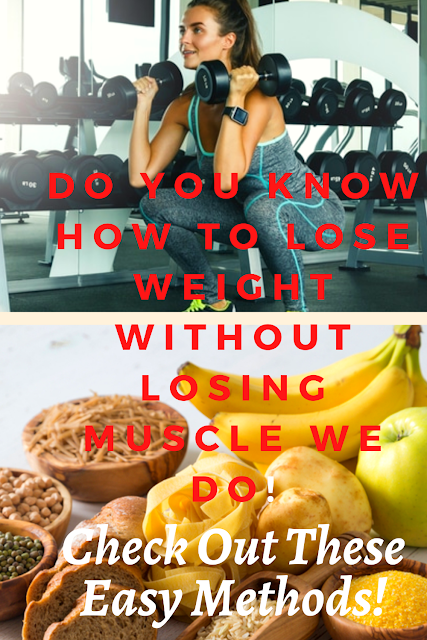When we say we want to lose weight, what we really mean is that we want to lose fat. Shedding fat while maintaining muscle mass can be difficult, but it’s not impossible. The tips below will show you how to lose weight without losing muscle, proving once and for all that it can be done.
Why is Maintaining Muscle Mass So Important?
Muscle mass burns more calories than fat, even while at rest. Not only that, but muscle is also responsible for creating the shape of your body. Want a bigger booty and a smaller waist? What about toned arms and legs? Each of these goals requires you to maintain or build muscle.
By keeping the muscle you currently have, you will optimize calorie burn and fat loss as well. It’s not easy, but it is possible if your willing to put in the effort. So, what should you do?
How to Lose Weight Without Losing Muscle
1. Don’t Starve Yourself
As far as fat loss is concerned, calories consumed versus calories burned is the single most important factor. You can lose weight by decreasing calorie intake, increasing exercise, or both. Many of us believe that losing weight is all about drastically slashing calories, but doing so will actually impede muscle retention.
The best thing you can do is decrease your caloric intake slightly by approximately 200 to 300 calories per day. We don’t recommend eating any fewer than 500 calories below maintenance. This means that if you maintain weight at 2000 calories, you wouldn’t want to eat any fewer than 1500 calories daily.
Figure out How Many Calories Should You Eat Daily or use the Mayo Clinic Calorie Calculator. Knowing how many calories your body needs is the first step to losing fat and toning up!
2. Maintain or Increase Protein Intake
You should never decrease protein intake, even when you’re in a caloric deficit. As a general rule of thumb, you should consume at least 1 gram of protein for every pound of body weight. For example, if you weigh 150 pounds, you should aim to eat a minimum of 150 grams of protein each day.
Regardless of whether you’re eating 1500 or 2000 calories a day as a 150-pound person, your protein intake should never be less than 150 grams per day. You can, however, eat more protein as long as you adjust carbs and fat. This macronutrient will feed your muscles while simultaneously assisting in the fat-burning process.
3. You can Reduce Carbs, but Don’t Eliminate Them
Slightly reducing carbohydrate intake is a good way to limit calories, but drastically decreasing carbs can be detrimental to muscle retention. One study showed that women that eat a ratio of 1.4 to 1 (carbs to protein) lost more fat and retained more muscle than those who ate more or fewer carbs.
So, if you weigh 150 pounds and you eat 150 grams of protein per day, you should aim for a daily intake of 210 grams of carbohydrates. All you have to do is take 1.4 and multiply it by your weight. The remainder of your calories should be made up of dietary fat.
4. Perform Total-Body Resistance Training
If you’re trying to maintain or build muscle, resistance training should be a top priority. In addition to helping you tone and build muscle, strength training will also improve joint health and balance.
At the very least, you should perform a total-body strength routine three times each week. If you are able, you can train up to six days a week, splitting your workouts into three lower body days and three upper body days. These sessions should be challenging, as utilizing heavier weights will allow muscle toning and growth to occur.
5. HIIT to Increase Fat Burn and Maintain Muscle Mass
Resistance training and High-Intensity Interval Training (HIIT) have one thing in common: They both recruit type II muscle fibers, which protect against muscle loss. This is different than steady-state or low-intensity cardio that can decrease muscle mass. HIIT is definitely the way to go when trying to lose weight without losing muscle!
6. Prioritize Recovery and Sleep!
Recovery is about more than just resting after a workout. Sleep is the most crucial form of recovery out there. When we don’t get enough of it, our bodies can suffer. The amount of sleep we get influences the hormones responsible for determining fat-loss rates and the rate of muscle degradation.
One University of Chicago study found that dieters who got 5.5 hours of sleep lost 55 percent less fat, as compared to dieters who slept for 8.5 hours per night.
Be sure to read these 5 Small Changes for Better Sleep. Getting a good night’s rest will help you to lose optimal amounts of fat and retain as much muscle mass as possible!
Applying these tips on how to lose weight without losing muscle to your fitness regimen will help you earn the body of your dreams. It’s going to require consistent effort, but it is possible! You’ve got this!
